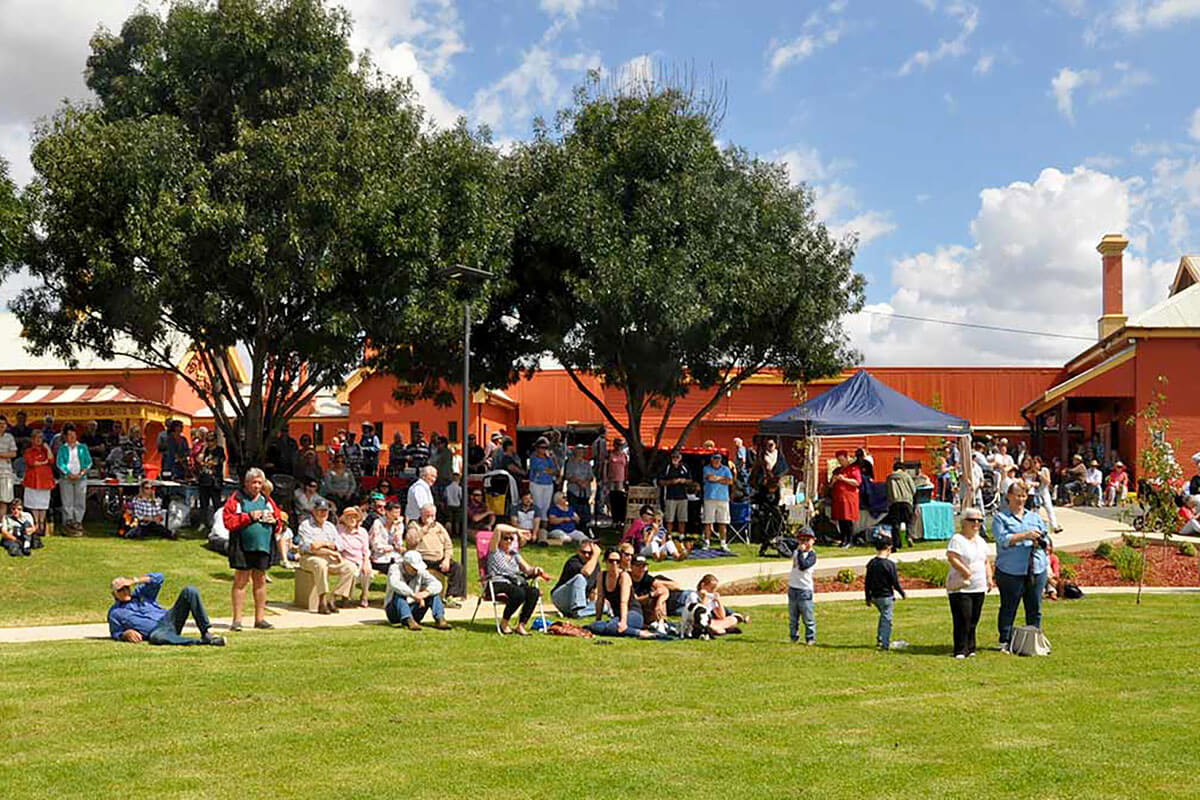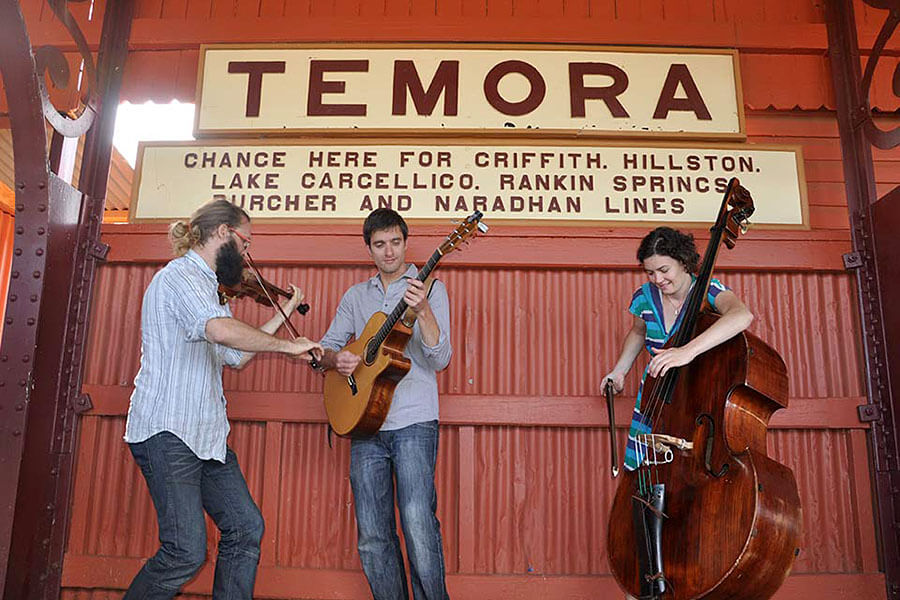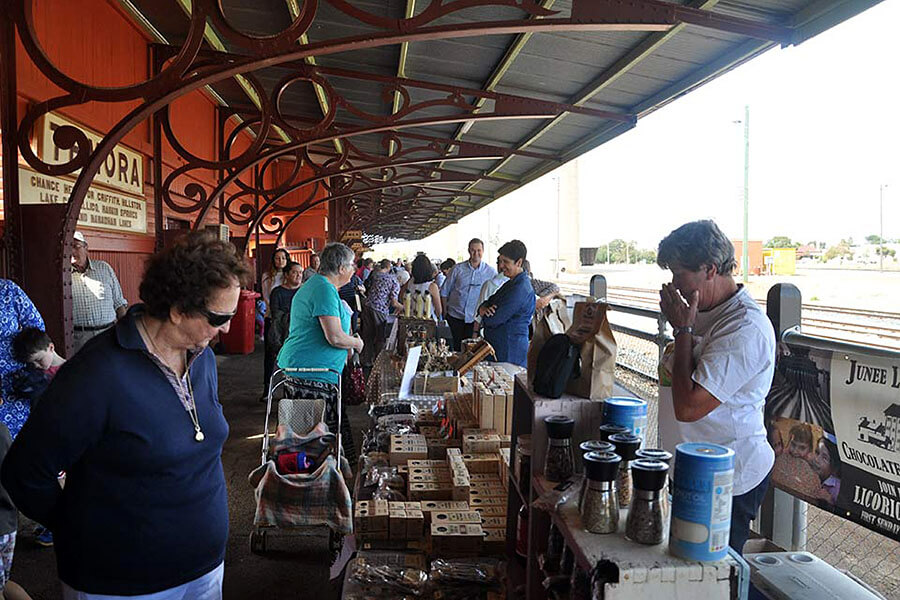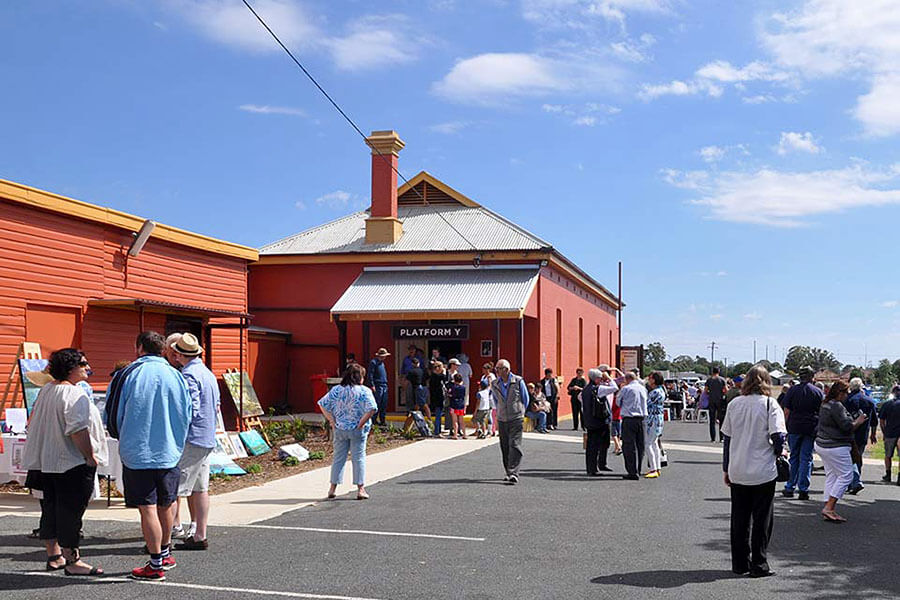Reviving the town’s social hub and welcoming visitors
The State Heritage-listed Temora Railway Station has been restored and returned to active use so it can once again play a central role in Temora’s social and economic fabric.
Temora Shire Council has redeveloped its formerly defunct railway precinct into an active community and tourism hub.
Initiated by the community and the council, the project was made possible through NSW Government heritage grants and a lease arrangement with Transport for NSW, allowing the precinct to be adapted for re-use as a railway museum, visitor facilities, youth centre, and exhibition space.
Surviving intact, with many original features
When it was built, Temora Railway Station was one of many similar stations across NSW. The buildings are now one of the best surviving railway groupings of this kind, and the group is listed on the NSW State Heritage Register.
The main building, dating from 1893, housed a Station Master’s office, ticketing rooms, and waiting rooms. In 1912 a refreshment room was added beside the main passenger building. The complex also included a large parcel office and timber switchroom in adjacent buildings lining the platform.
The buildings retain a high level of their original fabric (with timber wall panelling, bench seats, and fireplaces) and have several notable features including a cast-iron platform awning and verandah, decorative brick cornices, and cement mouldings. Many of the site’s early railway features remain, including signals and signage.
The wider station precinct also includes an extensive steam locomotive servicing area, with roundhouse, water tanks, and ancillary buildings (all now disused).
The space is highly utilised and valued by the community, for families using the park, by visitors to Temora to stay and explore local history, and for community events.
Claire Golder, Town Planner, Temora Shire Council
Playing an important role in the region
Temora Railway Station was an important part of the railway network connecting the Riverina to other parts of NSW, and the focus of much activity.
Temora was a bustling rural community with the busy station employing many local residents. It was the focus of the area’s rural activities, with stockyards and grain sheds, and facilities for steam engines. This history has generated strong ongoing community links to the station.
Saving the station from disrepair and vandalism
In 1986 the passenger railway service was discontinued and the station closed. Trains no longer stop at the station, although privately operated freight trains use the line and a section of the station is still used for signalling.
Unused for over 20 years, the station buildings were becoming increasingly derelict and were being vandalised. Concerned community members realised that if the buildings remained empty their decline would continue.
Temora Shire Council began discussions with the site owners, Transport for NSW and its agents John Holland Group, about options to return the site to active use. Council negotiated a 10-year lease agreement, and John Holland Group carried out asbestos and vermin control works to make the site safe for new uses.
Adapting the buildings for new uses
Temora Shire Council was awarded a NSW Government heritage grant to enable restoration, repairs, and re-use of the station buildings. Initial work included extensive repairs to undo damage caused by termites and vandalism. The restoration work also removed 1960s additions and fixed poor detailing of services that had been added to the buildings during their last years of usage as a railway station.
Working in consultation with John Holland Group’s heritage advisors, stakeholders and the community, council identified a series of new uses for the site and developed an adaptive re-use strategy.
Telling the story of the site’s significance has been central to the project. Council formed a Railway Research Group and coordinated the collection of archival records and the development of content to populate a historical display. The former waiting room and ticket offices have been adapted for the display of museum items and interpretive material related to the railway history of the precinct.
Reconnecting the station to the town
The station precinct was separated from the town centre by fencing and closed roads and pathways. These limited the use of the space and made the area prone to vandalism. Access, boundaries, and fences were renegotiated as part of the new lease agreement, and unnecessary sections of fence removed so the station forecourt could be linked to an adjoining playground and tennis club. New landscaping has returned the forecourt to active use as public green space and an amphitheatre, and an interpretive walking trail now circumnavigates the whole railway precinct.
Creating an active community hub
Facilities for local events and tourists have been provided, including refurbished public amenities. The green space and amphitheatre support events like local markets and live performances, and a free camping area has been set up for tourists with large vans and vehicles.
The former refreshment room has been refitted for use as youth club, and the former kitchen has been adapted to become a multi-function community venue with opportunities for commercial tenancies.
The whole site has been successfully transformed into a hub of community activity, as well as a much-needed tourist facility.
A second stage of the project has also obtained NSW Government funding. This includes the walking trail that takes in the wider railway precinct, and features interpretive panels providing stories about wheat, wool, the flour mill, and the steam locomotive works.
After years of disuse and disrepair this building has been reactivated. With funding help Temora Shire Council has provided a youth centre, visitor facilities, exhibition and performance area as well as a railway museum in this outstanding building.
National Trust NSW Heritage Awards jury citation
Lessons learnt
In many cases heritage significance is about more than just the building fabric or the site. Places can be important because of the role they played in the life of a community. Heritage places need uses that retain these important links.
This project demonstrates how creative thinking can bring a heritage precinct whose use has changed back into the life of the community, without affecting its heritage values. Minimal changes at the site have ensured people are once again using this important part of Temora and as a result will continue to understand its significant railway heritage.



